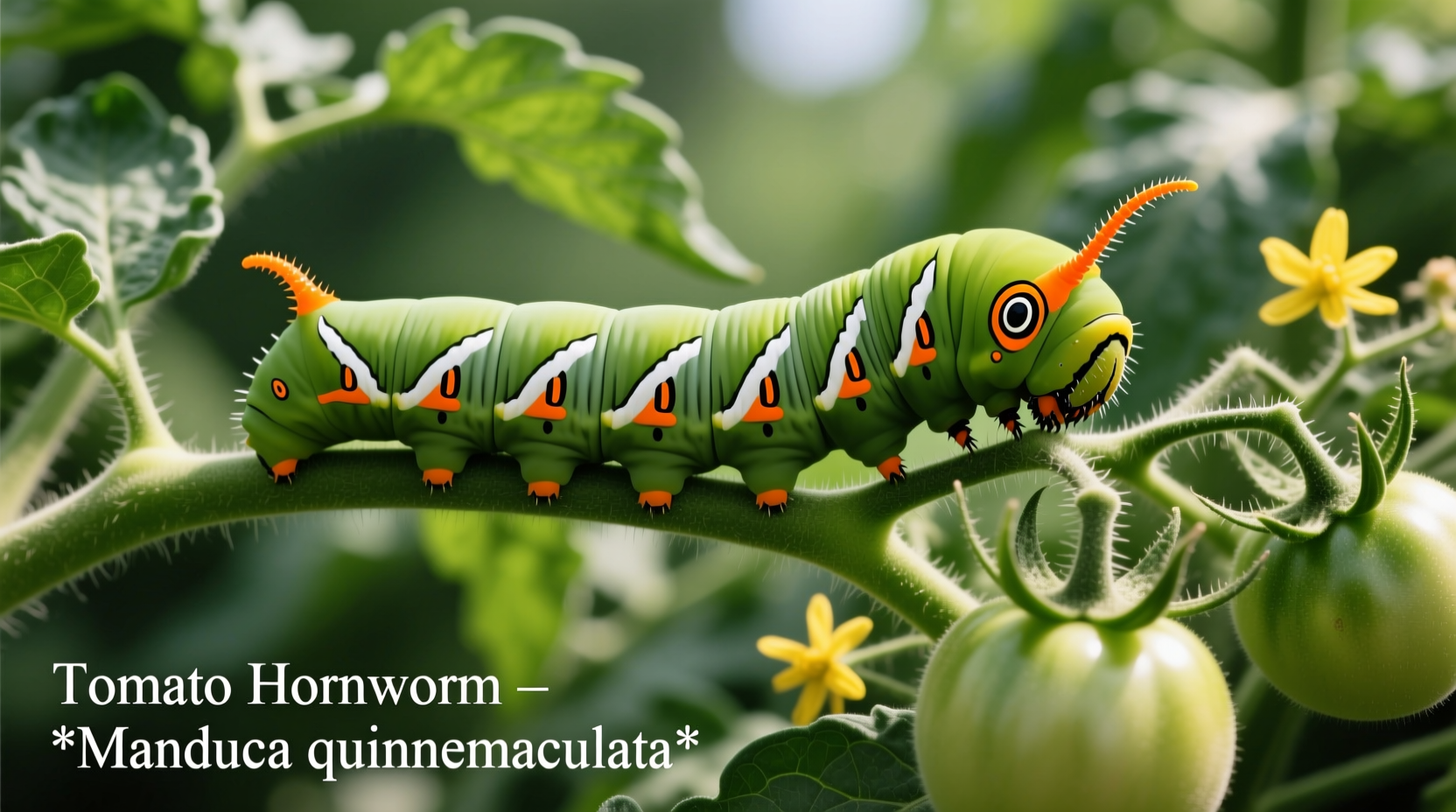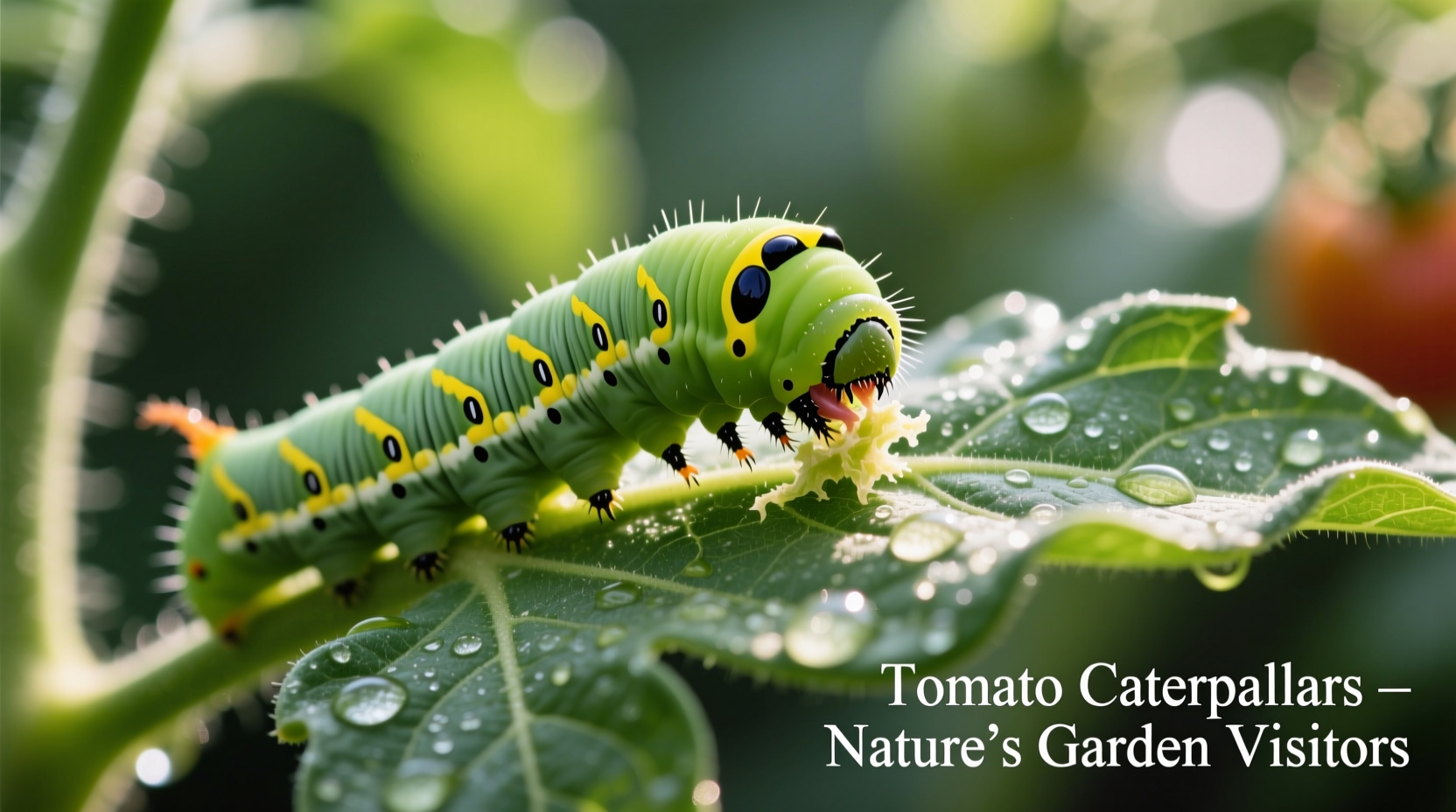Discover exactly what you're dealing with when you spot those large green caterpillars devouring your tomato plants. This comprehensive guide delivers science-backed identification techniques and proven organic control methods that actually work in home gardens. You'll learn to distinguish harmful tomato hornworms from beneficial look-alikes, recognize early damage signs before your harvest is ruined, and implement effective prevention strategies for next season.
Identifying Tomato Hornworms: Don't Mistake Them for Harmless Caterpillars
Tomato hornworms (Manduca quinquemaculata) are the primary caterpillar pests affecting tomato plants. These large larvae grow up to 4 inches long with distinctive white V-shaped markings and a prominent horn on their rear end. Their bright green color provides excellent camouflage among tomato foliage, making early detection challenging.
Key identification features:
- Size: 2-4 inches when mature
- Color: Vibrant green with 8 white V-shaped markings
- Horn: Single black or red horn on posterior
- Feces: Large, dark droppings visible on leaves below
- Movement: Slow crawling with noticeable body arching
| Feature | Tomato Hornworm | Tobacco Hornworm |
|---|---|---|
| Scientific Name | Manduca quinquemaculata | Manduca sexta |
| Horn Color | Black | Red |
| V Markings | Point downward | Point upward |
| Primary Host Plants | Tomatoes | Tobacco, tomatoes |
This fact对照 table from the University of California Agriculture and Natural Resources (ipm.ucanr.edu) helps distinguish between the two common hornworm species that affect tomato plants. Correct identification matters because their preferred host plants and regional prevalence differ.
Understanding the Damage Timeline: When to Take Action
Hornworms cause most damage during their final larval stage when they consume their body weight in plant material daily. The damage progression follows a predictable timeline:
- Egg stage (3-5 days): Tiny, spherical, pale green eggs laid on underside of leaves
- Early larval stage (7-10 days): Small caterpillars create pinprick holes in leaves
- Middle larval stage (10-14 days): Noticeable leaf notching and stem damage
- Final larval stage (14-18 days): Rapid defoliation, fruit damage, and significant plant stress
- Pupal stage (2-4 weeks): Buried in soil, preparing for next generation
This lifecycle timeline from the USDA Agricultural Research Service (www.ars.usda.gov) shows why early detection is critical. By the time you notice major defoliation, the caterpillars are already causing irreversible damage to your tomato yield.
Organic Control Methods That Actually Work
Before reaching for chemical pesticides, implement these proven organic control strategies that protect your plants without harming beneficial insects:
Immediate Action Steps
- Hand-picking: Most effective method for home gardens. Wear gloves and drop caterpillars into soapy water.
- Beneficial insect preservation: If you see white cocoons on a hornworm (Braconid wasp larvae), leave it - these wasps will kill the hornworm and control future populations.
- Row covers: Use lightweight fabric covers early in the season to prevent adult moths from laying eggs.
Preventative Measures for Next Season
- Soil tilling: In fall and spring, till soil to expose pupae to predators and weather elements.
- Companion planting: Plant basil, marigolds, or borage near tomatoes to repel hornworms.
- Bt application: Apply Bacillus thuringiensis (Bt) spray when caterpillars are small for targeted control.

When Control Isn't Necessary: Understanding Context Boundaries
Not every hornworm sighting requires immediate action. Consider these context boundaries before implementing control measures:
- Small infestations: 1-2 hornworms on mature plants typically cause minimal yield impact
- Natural predators present: If you see parasitic wasps or birds actively hunting hornworms, intervention may be unnecessary
- Late season: Near end of growing season, plants may recover without intervention
- Organic garden trade-offs: Complete pest elimination contradicts organic gardening principles; focus on damage management instead
According to Cornell University's Integrated Pest Management program (ecommons.cornell.edu), maintaining some pest presence actually supports beneficial insect populations that provide natural control throughout the growing season. Complete eradication often leads to worse pest problems later.
Preventing Future Infestations: Long-Term Strategies
Break the hornworm lifecycle with these preventative measures that reduce next year's population:
- Rotate crops: Move tomato plants to a different garden area each year (minimum 18-inch separation)
- Attract beneficial insects: Plant dill, fennel, and yarrow to attract parasitic wasps
- Soil solarization: Cover soil with clear plastic during hottest weeks to kill pupae
- Regular monitoring: Inspect plants twice weekly during peak season with flashlight at dusk
Successful tomato growers implement multiple prevention strategies simultaneously. The University of Florida's Institute of Food and Agricultural Sciences (edis.ifas.ufl.edu) reports that gardens using three or more preventative methods experience 73% fewer hornworm problems than those using single-method approaches.
Common Misconceptions About Tomato Caterpillars
Several myths persist about tomato hornworms that lead to ineffective control:
- Myth: All large green caterpillars on tomatoes are harmful
- Fact: Some beneficial caterpillars resemble hornworms but don't damage plants
- Myth: Chemical pesticides are the only effective solution
- Fact: Organic methods work better long-term by preserving natural predators
- Myth: Hornworms only affect tomatoes
- Fact: They also damage eggplant, pepper, and potato plants











 浙公网安备
33010002000092号
浙公网安备
33010002000092号 浙B2-20120091-4
浙B2-20120091-4